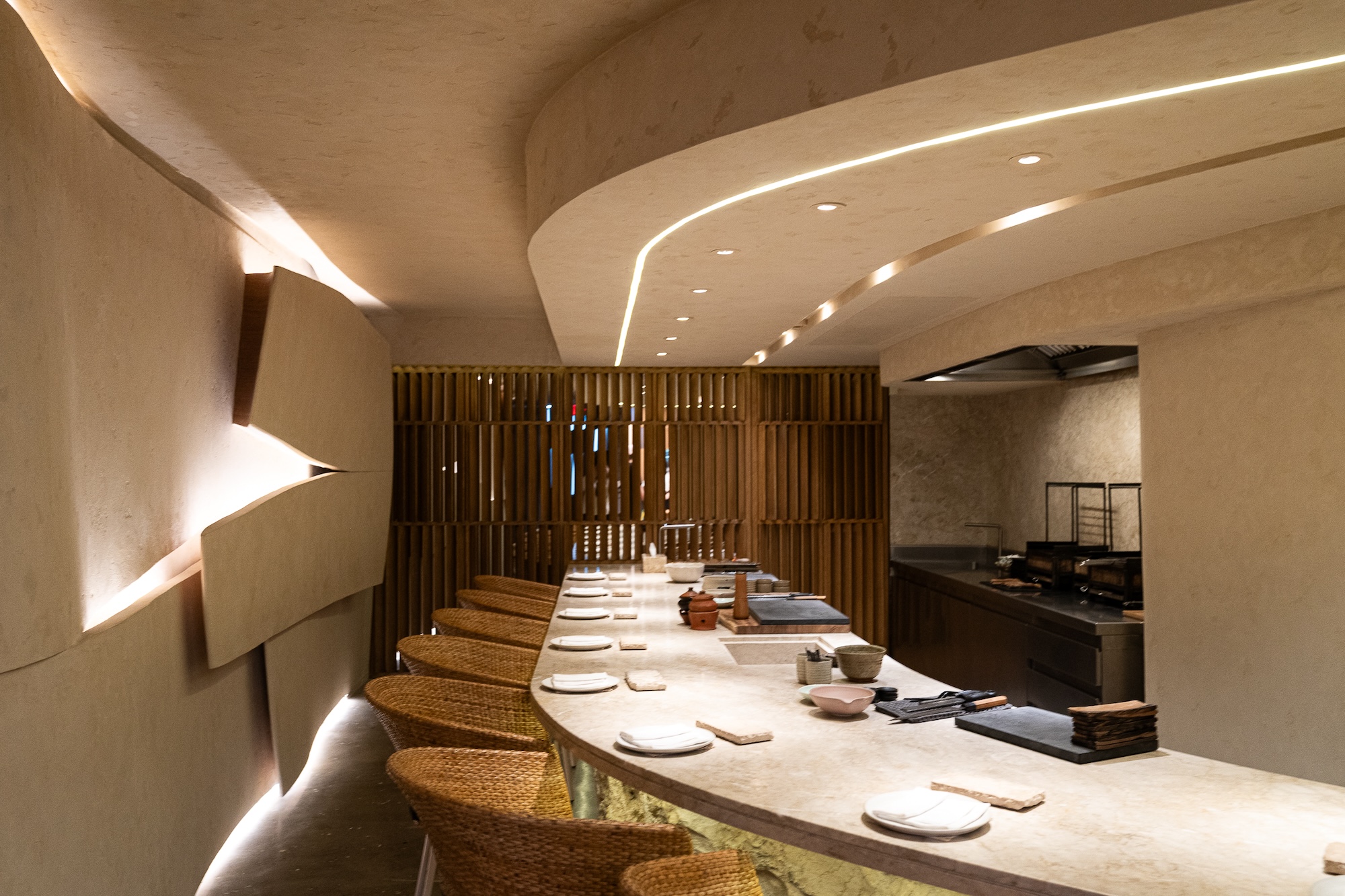There’s a distinct level of theater you’d find in any restaurant. Choreographed dances take the shape of servers bringing dishes in and out, and well-rehearsed lines such as “May I take your order?” are spoken at the start of every meal.
For fine dining restaurants, the show is even more spectacular. As with any show, there’s also a level of decorum diners must adhere to. Hushed tones of conversation and gentle clinking of cutlery are the norm at these establishments.
Make no mistake: Dining at Inatô is a show but it’s more a relaxed DJ set than a black tie gala.
Surprisingly, the choice in music is probably the first thing you’ll notice after stepping inside the restaurant. It’s not jazz or an austere orchestral album featuring Brahms’ greatest compositions—it’s the sick beats of Tupac, some TLC mixed in, and a few more ’90s hip-hop and R&B classics.
It’s simply off the beaten path.
Proudly Inatô
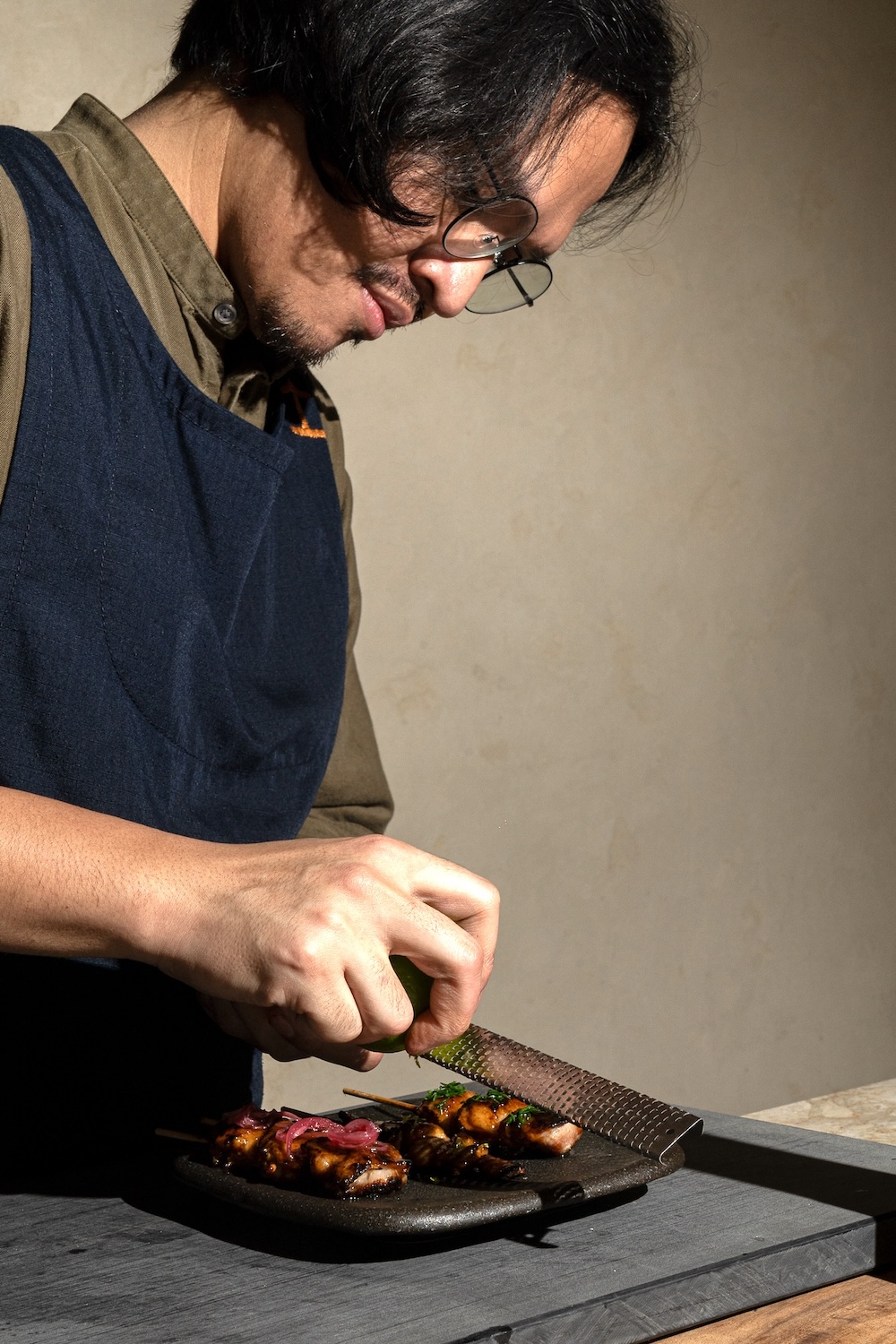
I asked JP Cruz, Inatô’s head chef of Toyo Eatery fame, if this was the type of music they played during service. “Yeah. We’re chill lang here.”
That’s one of the most succinct ways to describe the new modern Filipino restaurant. In an era of tasting menus and high-protocol dinners, Inatô’s a la carte service offers something different for diners to enjoy all the same.
“From our own understanding, Inatô is roughly translated to ‘our way’ or ‘our way of doing things.’ And the reason why we called it that is because it’s in line with what we wanted to do when it comes to the food that we express,” says Cruz.
“Our point of view on Filipino food is that walang singular route to expressing it. So I would say this is our way of doing it,” says JP Cruz.
Aside from doing things their way, the term also describes a level of familiarity and coziness. There’s no pomp or circumstance when something is described as such. It simply conveys comfort and clarity.
Though Cruz isn’t Bisaya, the name was contributed by a proud Boholana, May Navarra of the Toyo Eatery husband-and-wife duo. Cruz explains that by naming the restaurant Inatô, it also showcases other parts of the country.
“Our point of view on Filipino food is that walang singular route to expressing it. So I would say this is our way of doing it.”
A little help from (old and new) friends
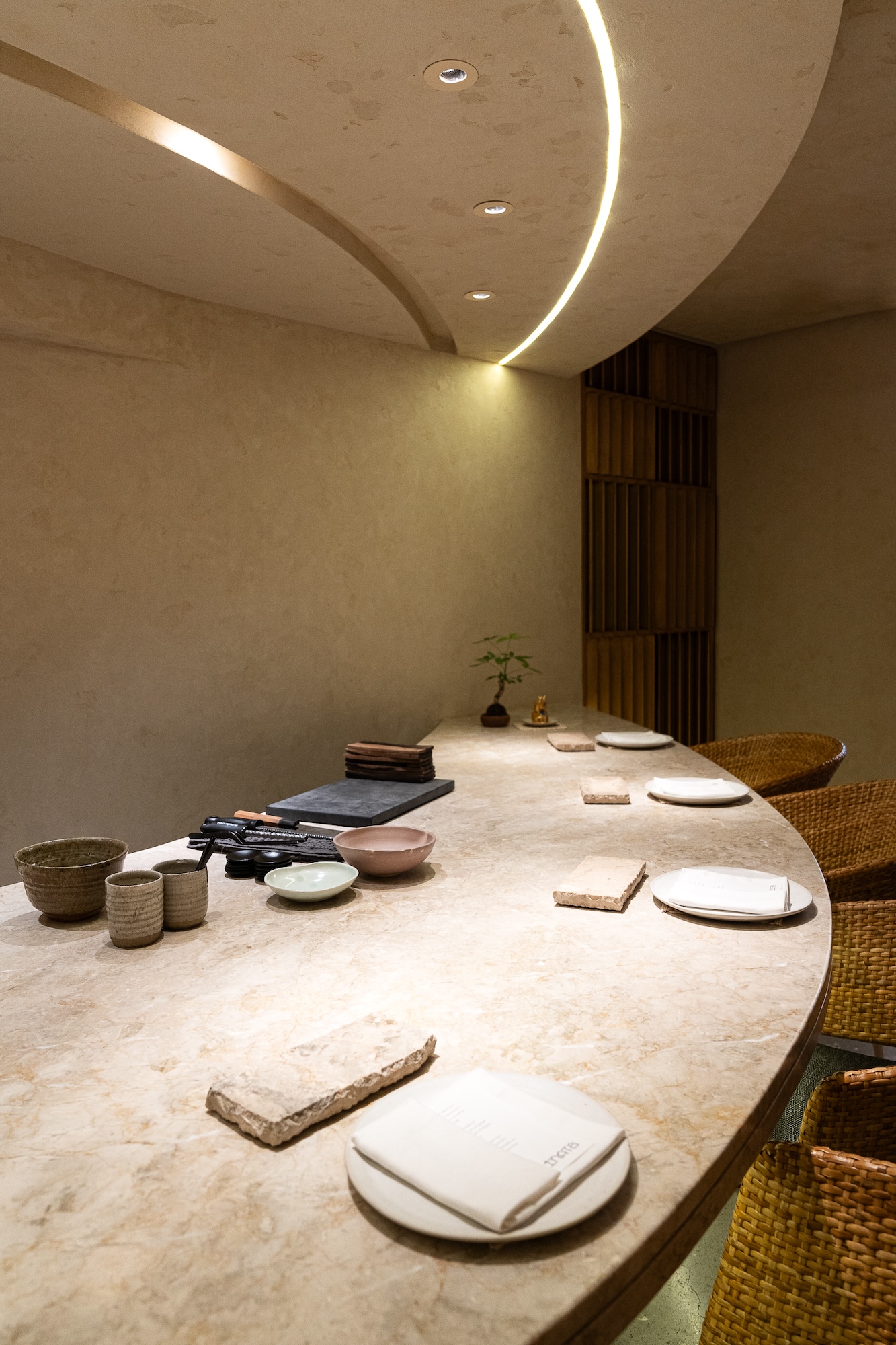
The first thing that greets you when you arrive at Inatô is a large window looking into its private dining space, and a gigantic door made from warm wooden slats. Entering the space feels like stepping into a cozy nest, with sleek beiges and warm tones everywhere.
The main dining area is a singular bar made of marble sourced from Teresa, Rizal. It’s all counter seating, which gives a better view of the kitchen and see how your food is made in real time.
“Parang paluto-style,” says JP Cruz. “Everything’s just right in front of you because we wanted things to be more intimate.”
“Parang paluto-style,” says Cruz. “Everything’s just right in front of you because we wanted things to be more intimate.”
On the left-hand side of the space, there’s an accent wall that takes the shape of a wave to add movement to an otherwise still room. It’s an interesting detail and the process of its creation is an even more worthwhile story.
According to Cruz, the walls were actually inspired by banana peels, which were mocked up using literal banana peels to get a feel of the movement and flow of the wall.

The ingenious design of the wall and the rest of the restaurant were done by Studio Ong. The design studio is the work of sister-duo Charisse and Coleen Ong, who are both originally from Cebu.
The theme of Cebuano talent continues with chairs from internationally renowned furniture designer Kenneth Cobonpue and tables from contemporary furniture designer Vito Selma.
Wherever you rest your hand, there’s a touch of Filipino talent. And we haven’t even gotten to the food yet.
The private room meanwhile is meant for larger parties—the entrance of which is draped with a curtain created by Carl Jan Cruz, who also designed the colorful aprons worn by the team.
Most of the dishes are served in handmade pottery and stoneware, which were made by local ceramic artists like Joey de Castro and Ella Mendoza.
Wherever you rest your hand, there’s a touch of Filipino talent. And we haven’t even gotten to the food yet.
A culinarian’s around-the-world journey to Filipino food
During Cruz’s tenure as Jordy Navarra’s right-hand man at Toyo Eatery, he was exposed to collaborations—some of which took him overseas. In his travels, he noticed that no matter the ingredient’s origin, it can still lead to Filipino food.
“‘Yung mga collabs, and whenever we travel, no matter what you use, no matter what ingredient it is, one way or another, parang, I feel like you can do something Filipino.”
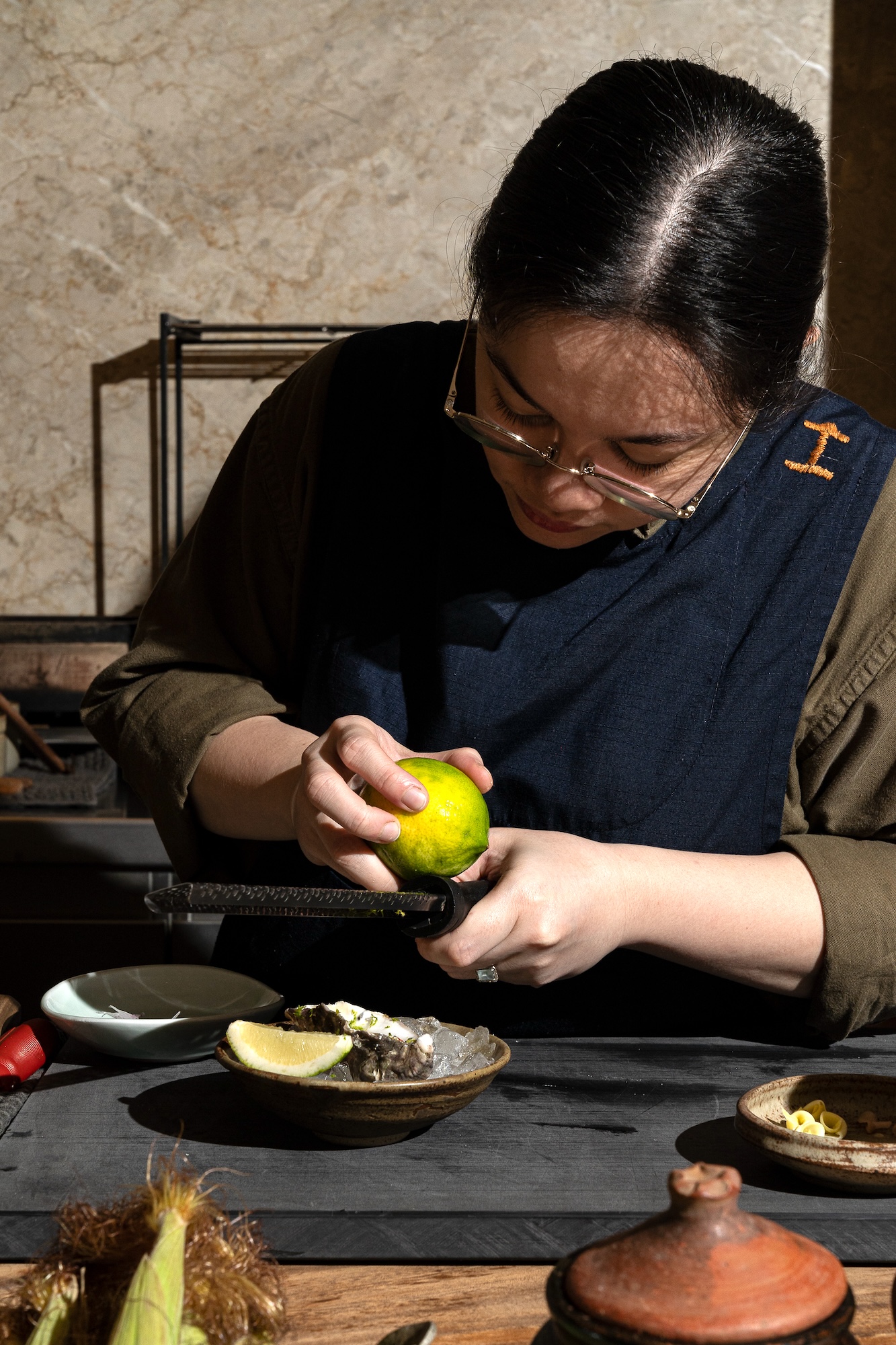
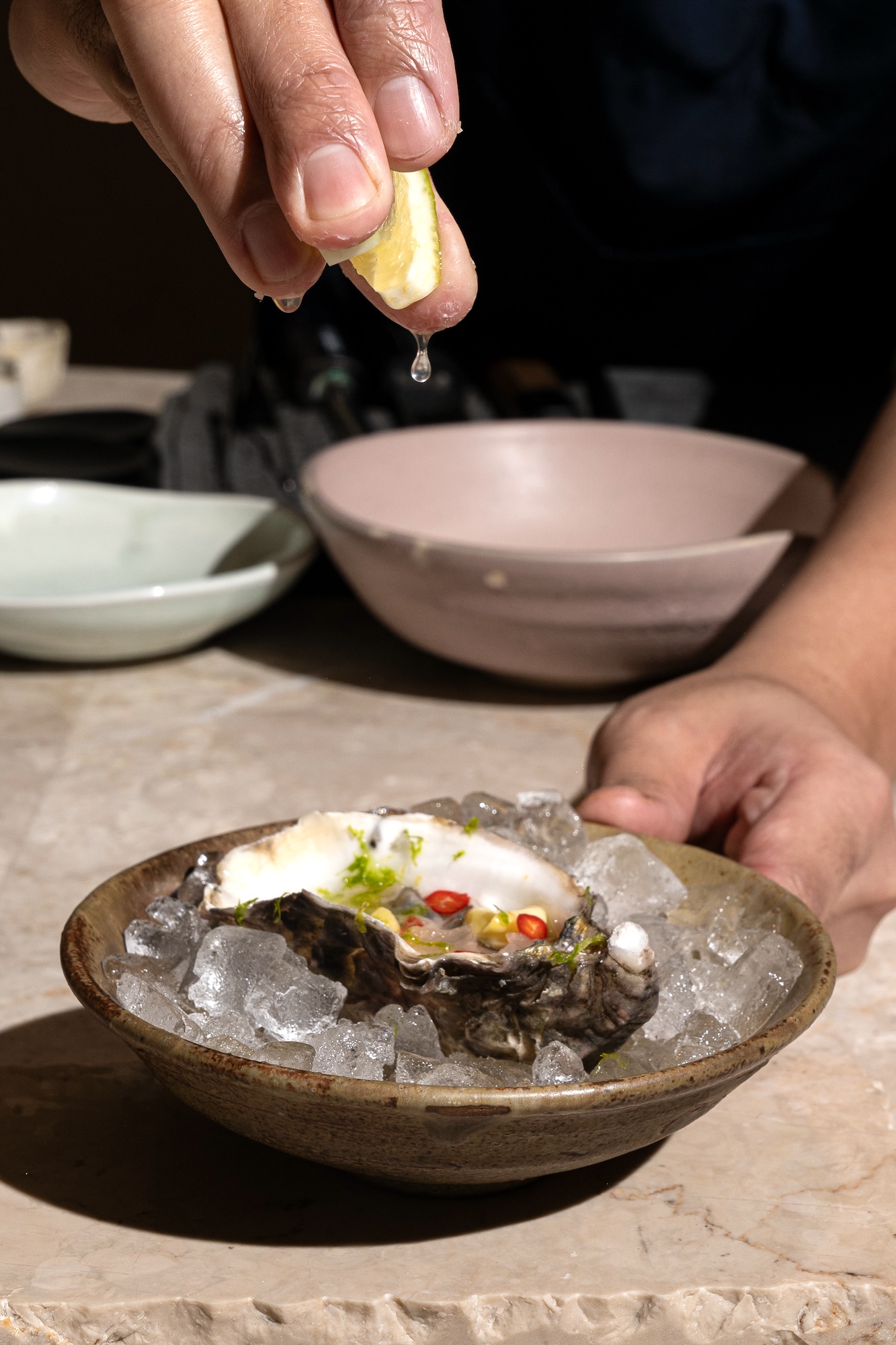
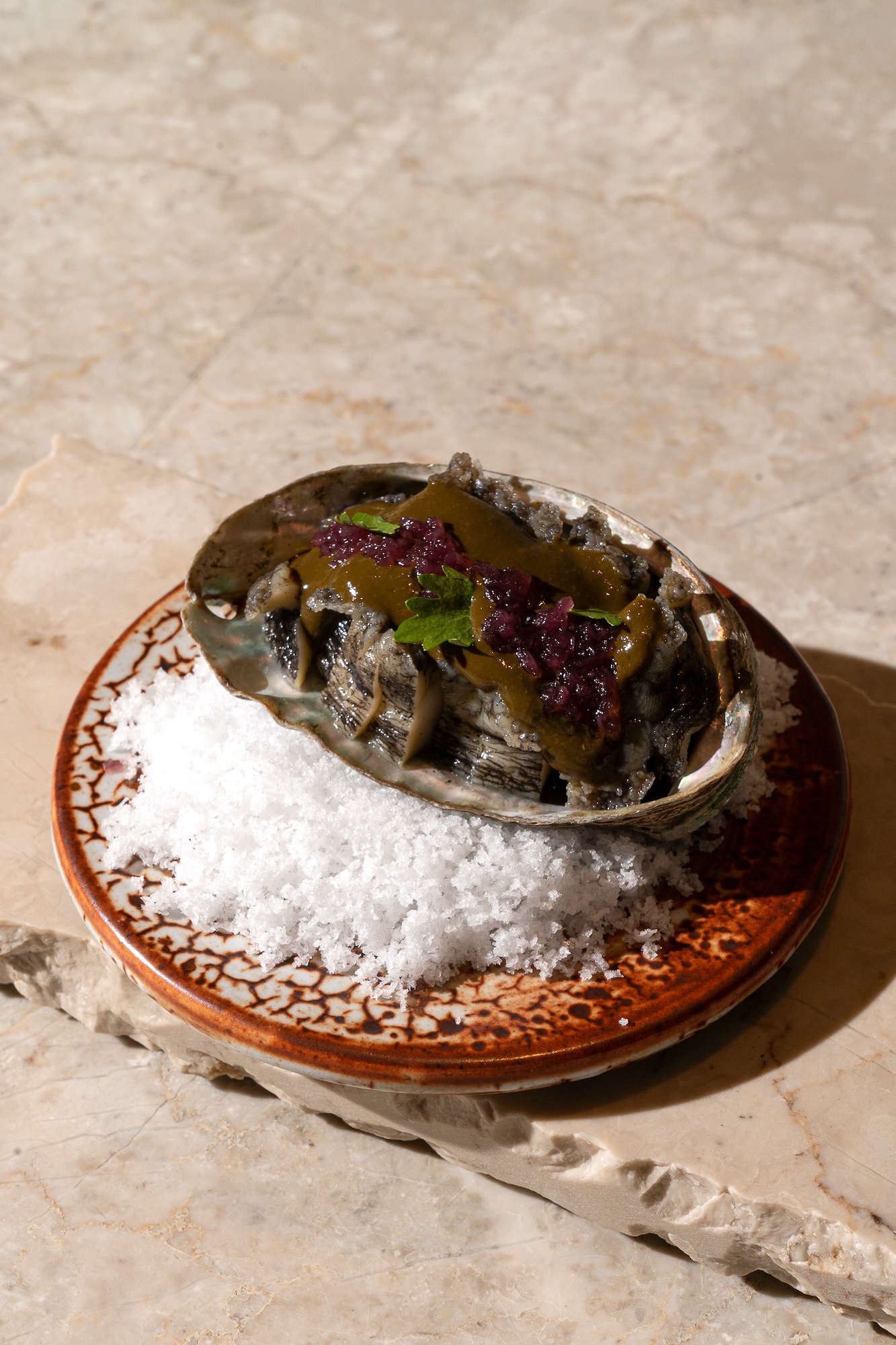
Produce is one of the top-billed stars at Inatô, and they pay homage to the hands that harvest them in every meal. “The [produce] displayed on the table are mostly local. Those are the ones we can get almost day-to-day. These come in from Pangasinan—from farmers we’ve been working with for the longest time.”
Those vegetables are what makes it into their slow-cooked pinakbet, which is cooked low and slow in a palayok and in its own juices. It’s a perfectly savory-sour dish enriched with spices and best eaten with a mountain of rice.
While most of the produce is locally sourced, Cruz doesn’t mind using ingredients from all over the world. The restaurant’s ingredients come from quite literally anywhere and everywhere. They have abalone flown in from South Korea, Ibérico from Spain, and kalabasa from their co-worker’s father’s backyard in Abra.
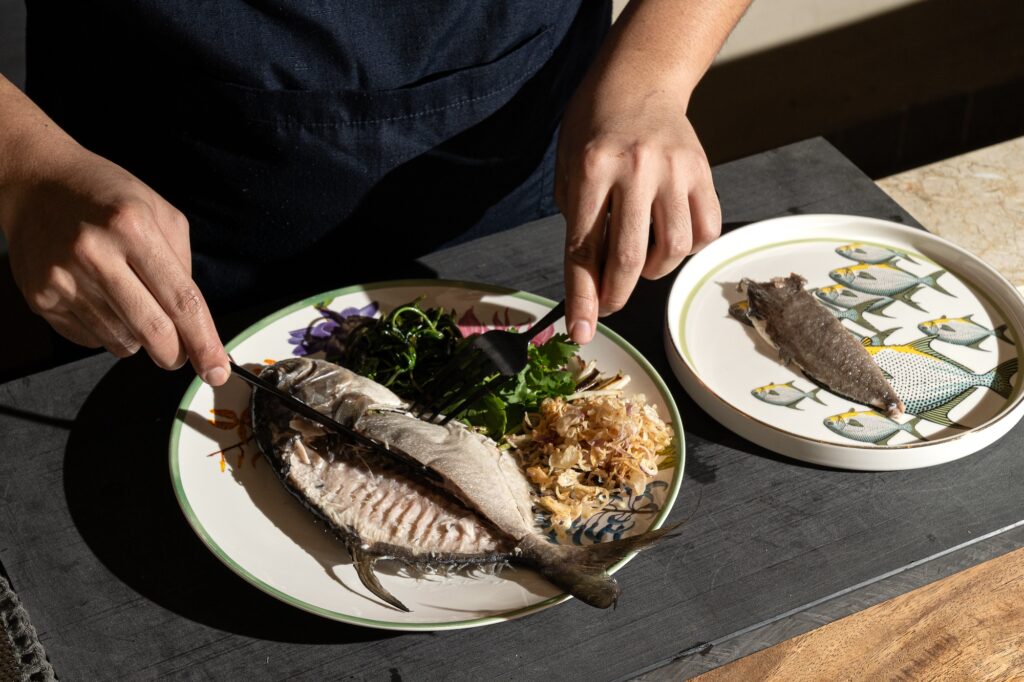
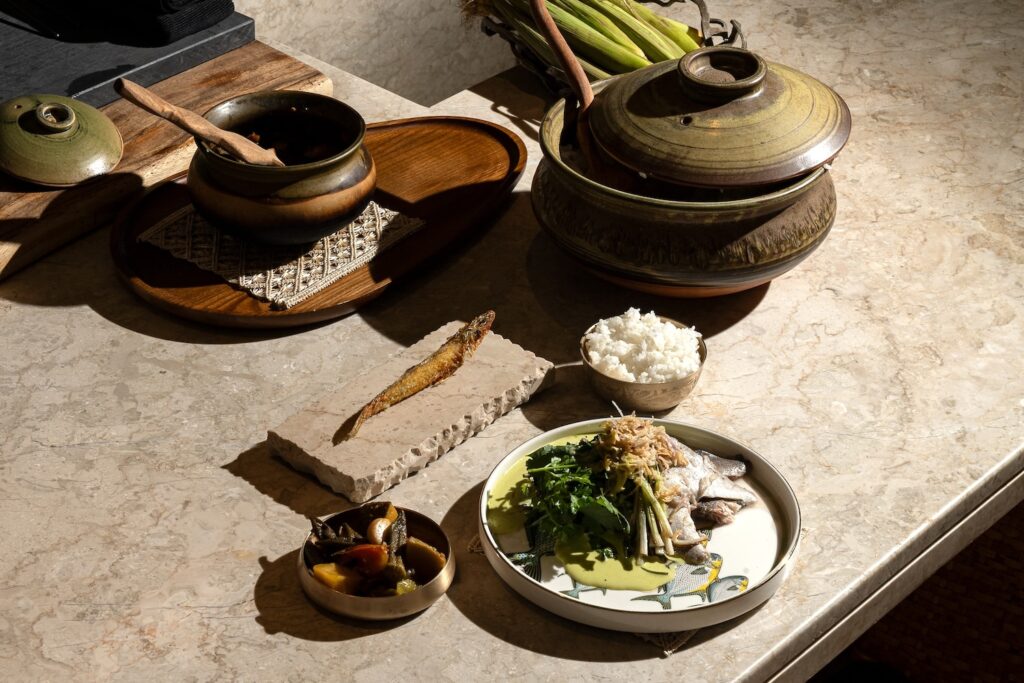
“The reason why we use [these ingredients] is not just because we just wanted to use it. They’re what we feel like what’s best [for our dishes] in our point of view. In terms of taste, pasok sila. It’s the flavor profile na hinahanap namin.”
A good example of a Filipino application of their international ingredients is the abalone that makes its way into a kinilaw-type dish.
“Normally we deal with abalone for textural purposes, but for this one, sobrang naka-relate kami. Kasi the moment we tried it out, parang ‘May balut to ah!’ moment. Then we decided what we wanted to eat with it, tas parang, suka, asin—savory, red onions,” he said.
“We wanted everything to still be somewhat relatable and something you can understand while you’re eating—especially if you’re Filipino.”
Something new for everyone at Inatô
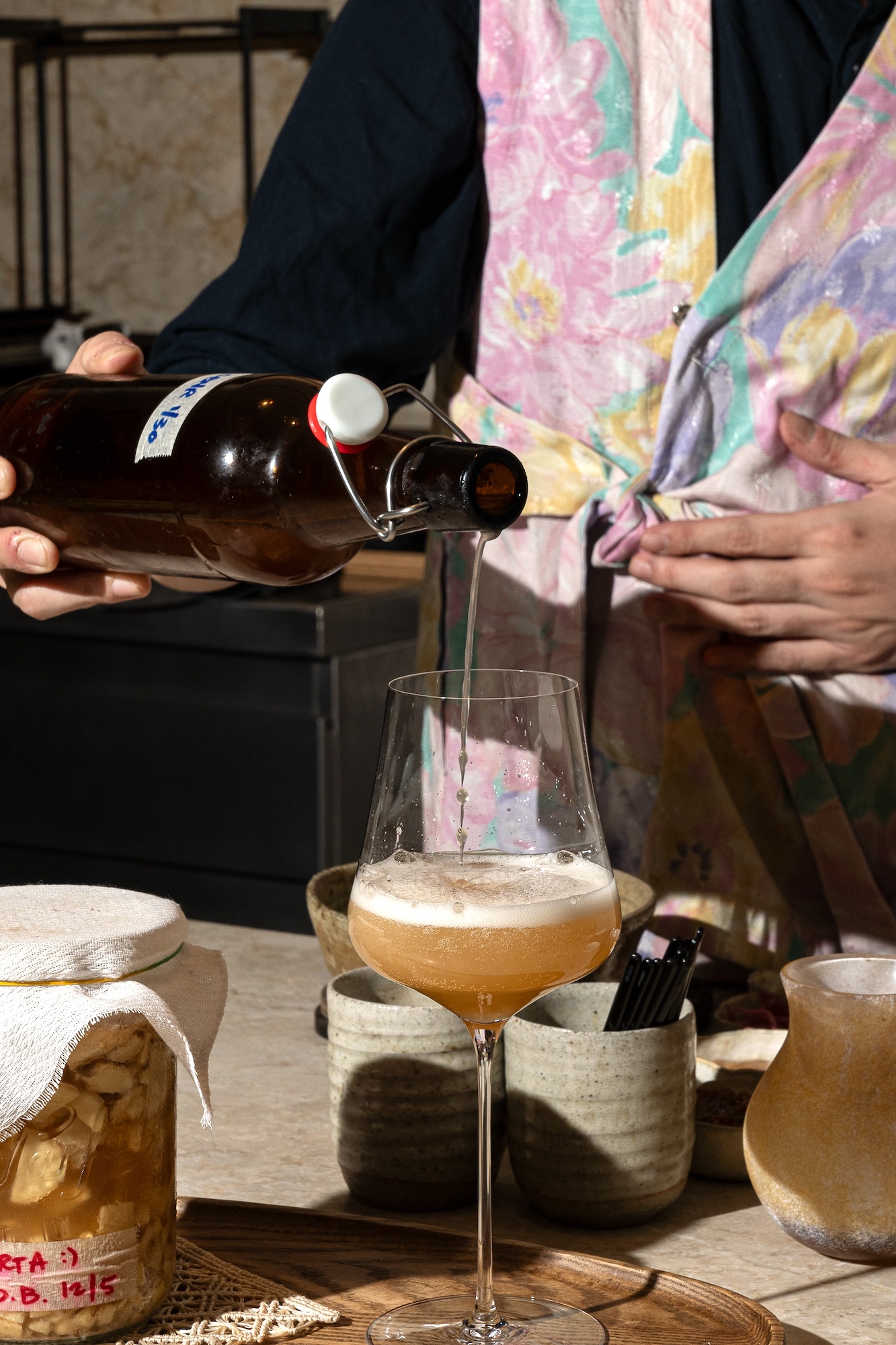
With every new beginning, challenges are sure to follow. For Cruz, these challenges are also what makes him proud to have set up shop to begin with.
Usually a fixed figure in the back of the house, the chef is now front and center interacting with guests next to his team. It’s a big change in terms of simultaneously engaging with diners while preparing their meal.
“It’s a new experience for us—talking to guests while cooking. You can imagine how hard it can be. Kasi you try to share your ideas—why you do what you do—and ano ‘yung kinakain nila basically. On top of that, you actually have to have a good conversation with the guest,” he confesses.

It’s an admittedly daunting task, but seeing diners’ pleased reactions in real time makes it worth it.
“In here, parang siguro, the fact that we see smiles parang makes us happy as well. And generally what we do makes sense. ‘Yun ‘yung mga parang rewards sa amin. ‘Yun ang mga nag-mo-motivate sa amin to, I guess, do what we do,” he finishes.
Inatô offers something unique to the diner in search of more. It’s not the typical prim and proper experience, but it offers something equally as valuable: comfort and familiarity made new. There’s a distinct flair that the Inatô team offers—from the theatrical experience of food preparation to the ’90s music in the background.
They have taken elements of the familiar and foreign and turned it into a sensory experience that cannot be missed. It’s a team effort draped in love and a spunkiness that can only be described as “doing things their own way.”





